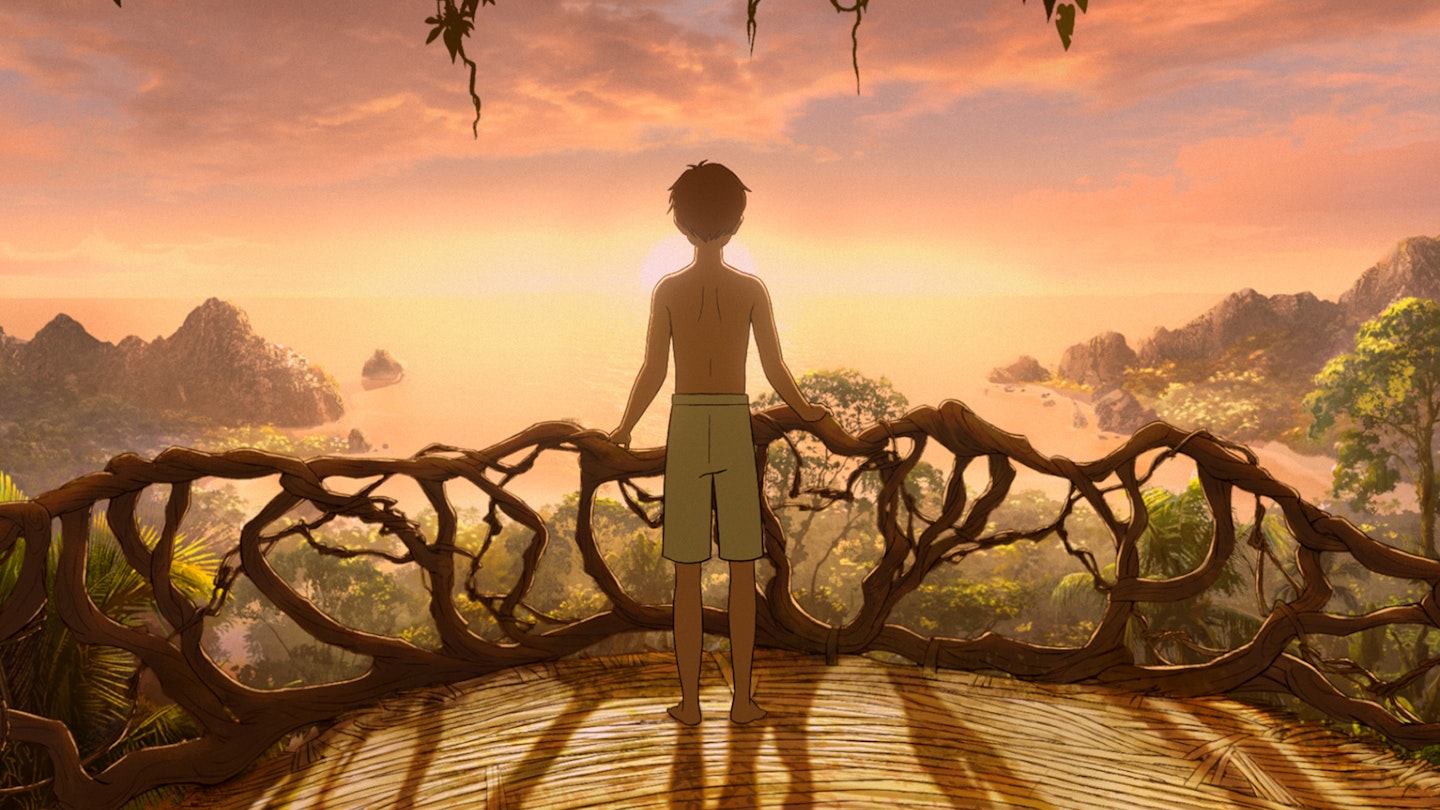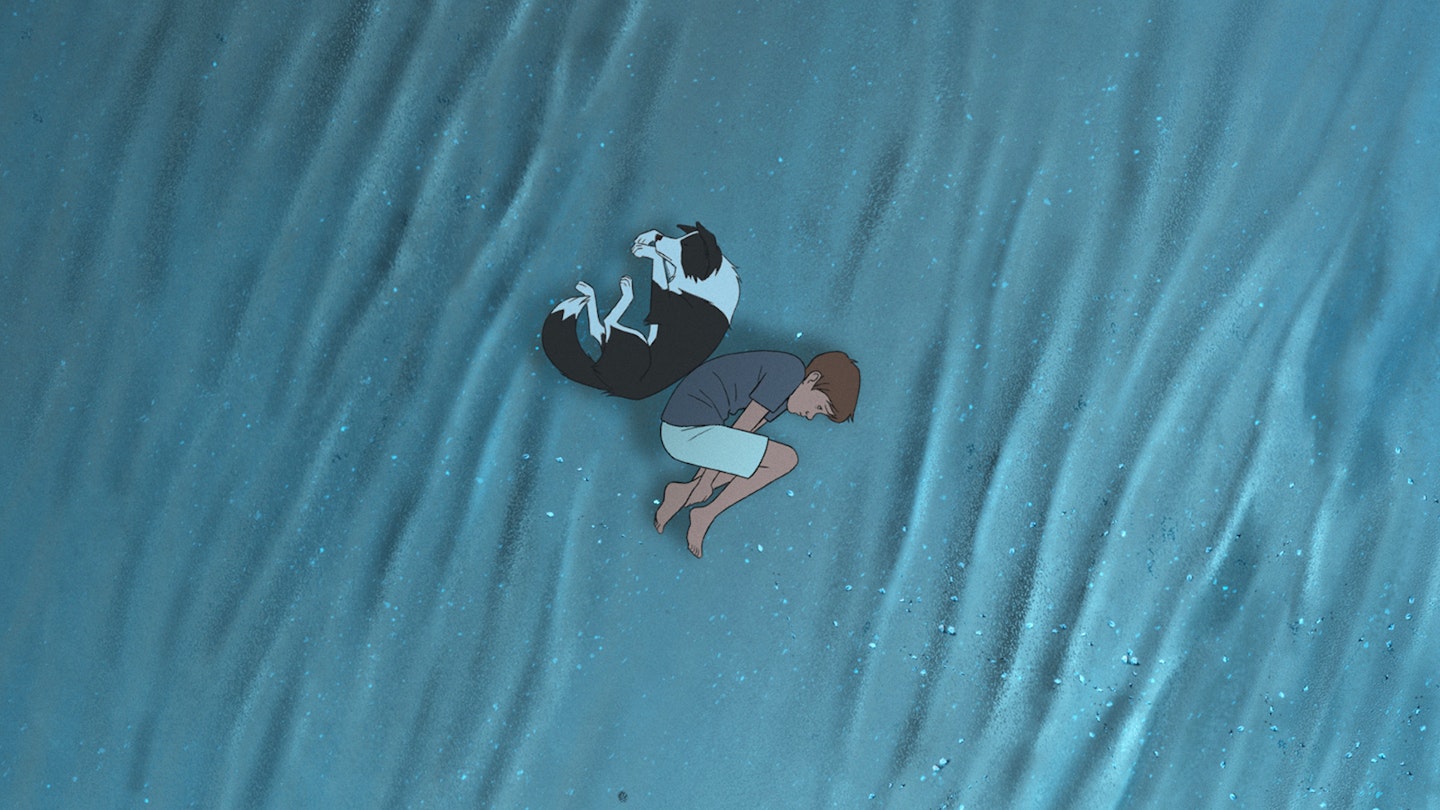Michael, the child (voiced by Aaron MacGregor) at the centre of British animated adventure Kensuke’s Kingdom, has a ruinous obsession with his dog. When his parents (voiced by Cillian Murphy and Sally Hawkins) lose their jobs and embark on a global family trip on their trusty sailboat, the mischievous Michael defies their orders and smuggles the pet aboard. Predictably, Stella the dog is not fit for sea life, and her dangerous antics result in a lot of amusing screaming of her name, as if this were a regional-theatre production of A Streetcar Named Desire.

Michael actually tumbles overboard trying to save her, which, because we’re not in talking-animal territory here, means there is very little dialogue — and comparatively little action — once he’s stranded, a bold choice given the likely attention span of its young target audience. What it lacks in excitement, this survivalist, Cast Away-in-miniature section makes up for in its evocative 2D-animated landscapes, which lend the film a pleasingly throwback quality, and capture the fearsome splendour of nature in crisp, clean lines.
Learning to live in harmony with the natural world is certainly a good lesson for children, and the film subtly conveys its message.
After much sleeping in hollowed-out tree trunks and drinking water droplets off leaves, Kensuke’s arrival livens things up. He’s voiced by a suitably weary, Japanese-speaking Ken Watanabe, and he’s less than thrilled to be sharing his home with a white British boy (the colonialist implications are never spoken, but they’re undeniably there). Kensuke — quite literally, too literally — draws a line in the sand, confining the child to the beach.

From this point on, the themes of Michael Morpurgo, the former Children’s Laureate whose 1999 novel the film adapts, are clearly felt. The environmentalist author is known to embed ideas of conservation into his work, and they form a core tenet of Kensuke’s Kingdom. The movie lovingly spotlights sleeping bats and fruit-munching orangutans, then shows those same creatures again, this time imperilled, when tranquiliser-shooting hunters invade the island in a tense sequence. Learning to live in harmony with the natural world is certainly a good lesson for children, and the film subtly conveys its message.
Morpurgo was also one of World War II’s myriad child evacuees, and often writes family-friendly explanations of military conflict. The most beautifully rendered scene in the film is a flashback to the 1945 Nagasaki bombing, which, as seems to be the fashion in our post-Spider-Verse world, is visualised in a completely different, watercolour animation style (here inspired by 19th-century ukiyo-e artist Hiroshige), with an ink splodge denoting the explosion. As Michael and veteran soldier Kensuke’s mutual understanding deepens, so too does the boy’s connection to the endangered paradise around him. It’s a touching evolution.
